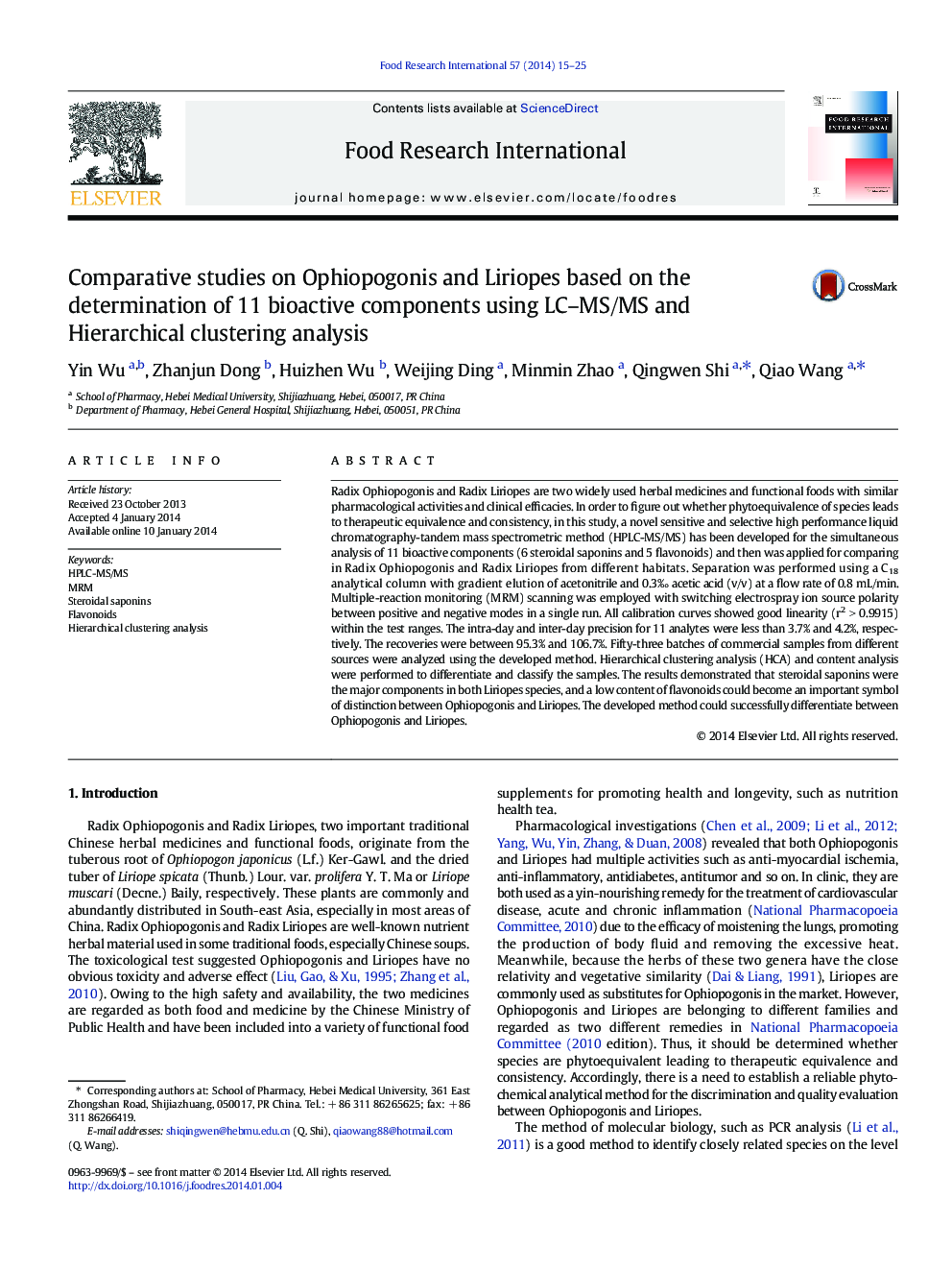| Article ID | Journal | Published Year | Pages | File Type |
|---|---|---|---|---|
| 6396779 | Food Research International | 2014 | 11 Pages |
Abstract
Radix Ophiopogonis and Radix Liriopes are two widely used herbal medicines and functional foods with similar pharmacological activities and clinical efficacies. In order to figure out whether phytoequivalence of species leads to therapeutic equivalence and consistency, in this study, a novel sensitive and selective high performance liquid chromatography-tandem mass spectrometric method (HPLC-MS/MS) has been developed for the simultaneous analysis of 11 bioactive components (6 steroidal saponins and 5 flavonoids) and then was applied for comparing in Radix Ophiopogonis and Radix Liriopes from different habitats. Separation was performed using a C18 analytical column with gradient elution of acetonitrile and 0.3â° acetic acid (v/v) at a flow rate of 0.8Â mL/min. Multiple-reaction monitoring (MRM) scanning was employed with switching electrospray ion source polarity between positive and negative modes in a single run. All calibration curves showed good linearity (r2Â >Â 0.9915) within the test ranges. The intra-day and inter-day precision for 11 analytes were less than 3.7% and 4.2%, respectively. The recoveries were between 95.3% and 106.7%. Fifty-three batches of commercial samples from different sources were analyzed using the developed method. Hierarchical clustering analysis (HCA) and content analysis were performed to differentiate and classify the samples. The results demonstrated that steroidal saponins were the major components in both Liriopes species, and a low content of flavonoids could become an important symbol of distinction between Ophiopogonis and Liriopes. The developed method could successfully differentiate between Ophiopogonis and Liriopes.
Related Topics
Life Sciences
Agricultural and Biological Sciences
Food Science
Authors
Yin Wu, Zhanjun Dong, Huizhen Wu, Weijing Ding, Minmin Zhao, Qingwen Shi, Qiao Wang,
